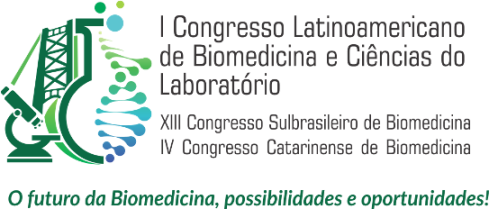Dados do Trabalho
Título
ANTI-BIOFILM EFFECT OF LMM6 COMPOUND IN CANDIDA ALBICANS
Fundamentação/Introdução
The incidence of hospital infections caused by Candida spp. has increased in the last years being C. albicans is the most prevalent species. The therapeutic options available for the treatment of these infections are restricted. In addition, the resistance and expression of virulence factors such as forming biofilm difficult the efficacy of conventional drugs. The biofilms are complex structures composed by cells enclosed in an extracellular matrix that difficult antifungal penetration and promote resistance to host defenses. Thus, the search for new drugs with action in biofilms is imperative. Previous studies performed by our group selected the LMM6 compound (running patent process) by virtual screening technique. This compound was shown to be promising against Candida species with low minimal inhibitory concentration (MIC).
Objetivos
To evaluate the efficacy of LMM6 compound during the forming biofilm by C. albicans.
Delineamento e Métodos
In 96-well plates, the inoculum at 1x105 yeast/mL was added and incubated at 35°C/120rpm/2h. Subsequently, wells were washed once with PBS to remove the non-adherent yeasts and forming biofilm was treated with LMM6 at concentrations of MIC (16μg/mL), 2xMIC (32μg/mL) and 4xMIC (64μg/mL) and incubated at 35°C/120rpm/24h. After 24 hours, biofilm inhibition was evaluated by total biomass (violet crystal staining), viability cells (determination of colony forming units - CFU) and scanning electron microscopy (SEM).
Resultados
The treatment with LMM6 reduced the CFU and total biofilm biomass of C. albicans at all tested concentrations (*p<0.05). The anti-biofilm activity was dose-dependent with the best results in the concentration of 4xMIC that reduced approximately 6.5 Log of the CFU and decreased the total biomass ~6 times in relation to the control (without LMM6). Additionally, MEV examination showed that LMM6 caused disorganization of the biofilm structure with alteration in fungal cell morphology, cell extravasation and loss of membrane integrity, compared with control.
Conclusões/Considerações Finais
LMM6 compound presented potential to destructure the biofilm of C. albicans. These results are encouraging, once the forming biofilm by this specie is considered an important virulence factor that which contributes to it’s pathogenicity. Thus, we suggest the LMM6 compound as a promising candidate for treatment of infections caused by C. albicans being effective for the cells free-floating (planktonic) and in biofilm.
Palavras-chave
C. albicans, LMM6, Biofilm.
Área
Tema livre
Instituições
Universidade Estadual de Maringá - Paraná - Brasil
Autores
Daniella Renata Faria, Raquel Cabral Melo, Pollyanna Cristina Vincenzi Conrado, Patrícia Souza Bonfim-Mendonça, Érika Seki Kioshima
